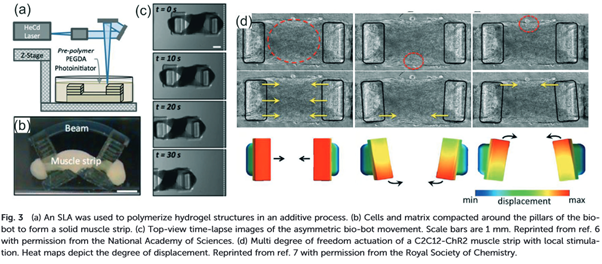3D printing is essentially a more advanced manufacturing technology. Its development direction is to make it easier and more convenient for humans to make various kinds of things, including micro-robots.
Recently, in the "The Royal Society of Chemistry" 2015 magazine, there was an application called "3D Printing (3D) Printing for Microswimmers. Research papers by and Bio-Hybrid Robotics) by MM Stanton, C. Trichet-Paredes and S. Sánchez.
This paper discusses the realities and challenges faced by the use of 3D printing technology for manufacturing micro-robots. Researchers used microswimmers (micron-sized robots) to conduct experiments and test their ability to cope with challenges in different types of liquid and cellular environments.
The author of this paper successfully produced a 322-micron MagnetoSperm robot swimmer using 3D printing, and a microswimmer printed with a Connex Object 260 3D printer and high temperature polymer. The micro swimmer was created The "scallop" shape.

The end result is amazing and very encouraging. It is understood that the above-mentioned MagnetoSperm and scallop-shaped micro swimmers performed very successfully in a very viscous environment, and in further experiments with scallop-shaped micro swimmers, it can rotate like a bacteria and can carry " goods".
The research team was inspired to use the same two-photon lithography technology to create a spiral “micro-swimmer cargo shipâ€. The micro-robots were coated with nickel and titanium with hexahedral and tubular shapes. The researchers let these 3D-printed microcargo vessels use human kidney cells as cargo, passed various challenges, and successfully completed transportation tasks. The scientists concluded that 3D printed micro swimmers and transporters are indeed the future of biomedical robot applications.

Considered to be "bio-hybrids," the use of 3D printed mechanical systems in biological organisms has further evolved into bio-driven power plants, also known as biological robots. These miniature devices are powered by cells and biological fluids and are very simple in structure. By coating a 5mm-long stent in 3D and coating protein and skeletal myoblasts on the surface, the researchers were able to create a "bio-hybrid crawler" with "muscle tracks" that provide enough exercise power. Researchers can use electrical pulses to stimulate the muscle track to contract and move the stent so that they can fully manipulate its motion.In addition, the researchers also summarized the use of light pattern stimulation to create a bio-hybrid actuator. )Applications.
Scientists believe that these 3D-printed micro-robots are very promising in the human body, such as transporting “goods†in the human body for treatment purposes.

(Editor)